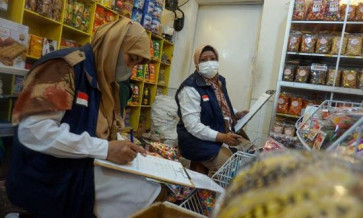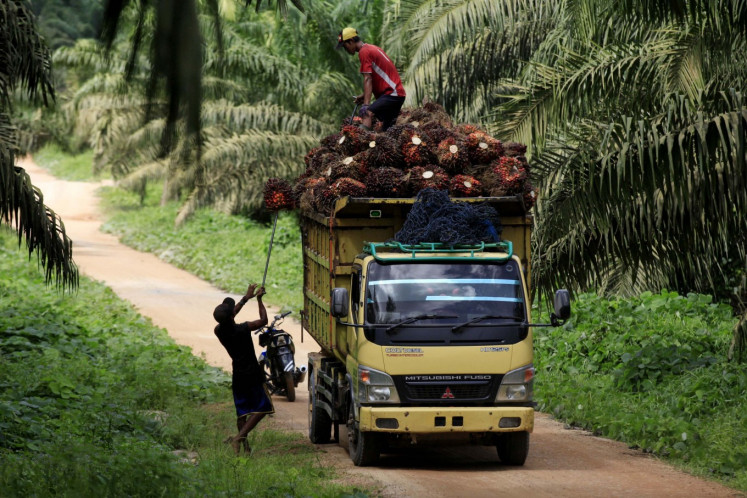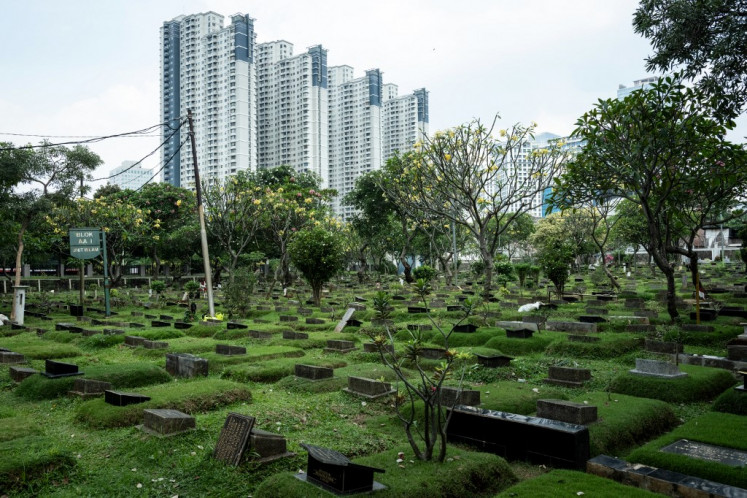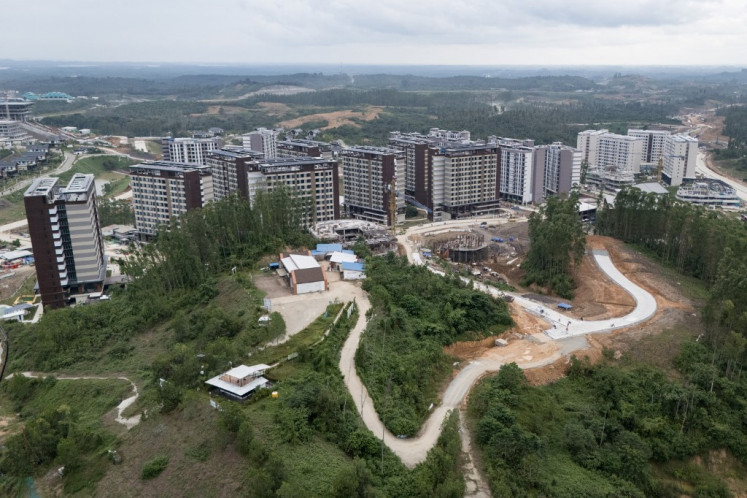Popular Reads
Top Results
Can't find what you're looking for?
View all search resultsPopular Reads
Top Results
Can't find what you're looking for?
View all search resultsGreen as gold
Salvaged: Deep in the bamboo forest, men in Buungan in Bangli regency harvest old bamboo
Change text size
Gift Premium Articles
to Anyone
S
span class="caption" style="width: 398px;">Salvaged: Deep in the bamboo forest, men in Buungan in Bangli regency harvest old bamboo.For hundreds of years, the cool green bamboo forests of Buungan in Bangli regency have nursed its human population from cradle to grave.
From this nine hectares of bamboo forest, the 200 odd families of Tiga Banjar Buungan harvest food from young shoots, building supplies for housing and furniture and can create water carriers, ornaments and finally their vehicles into the next world.
According to 40-year-old Wayan Subawa, a farmer and bamboo harvester from the village, the bamboo forest is owned and worked by the villagers, with the money earned shared by village members and
their temple.
“Once a year we can take the tall bamboo and leave the new shoots for the following year. We have been harvesting for hundreds of years — this is our inheritance from our ancestors. The forest is owned by the banjar so all the people here can use it. The banjar sells the bamboo to build and restore our temple.
Each year or two we earn around Rp 100 million [US$10,900], that’s from around 1,200,000 bamboo stems,” says Subawa.
Harvesting on such a massive scale has no impact on the forest, says villager Pak Guruwaldi, also 40 years old. He explains that sustaining the forest is paramount and the methods used in its protection have been handed down over generations.
“When you cut bamboo, you don’t take it all. We harvest only the old wood. If it’s young wood it’s still growing and if you cut that young wood the other young shoots die off. If people cut the bamboo without knowledge, we could lose the whole nine hectares, so yes, it takes skill to cut the right pieces,” says
Guruwaldi.
All purpose: Temples in the village have bamboo shingles.Guruwaldi and Subawa learned to care for the forest from their elders who they say planted the bamboo forest that supports the village centuries ago.
“We work this forest as our ancestors did. The temple here is built through the sale of our bamboo,” explains Guruwaldi, adding that because the shared forest supports religious celebrations and funds temple repairs, local people are not weighed down with these costs.
“No one here is stressed about money when we have ceremonies as the funds come from the bamboo sales and gotong royong [working together]. We all work together, we are not one by one. In the cities people are gengsi [lifestyle oriented], they are individualistic. Maybe they are worried about seeming rich or above others, here we work all together and we are all equal,” says Guruwaldi.
Costs associated with temple offerings and cremations among many of Bali’s Hindu communities are high, with funerals often costing upwards of Rp 15 million. However, for the people of Buungan an expensive funeral costs just Rp 2 million.
“We don’t use sarcophagi. Again the bamboo is used for our cremations instead of wood. We build gedong,” says Guruwaldi, drawing a house placed high on bamboo poles.
There is a constant stream of bamboo customers in the village. “We have the best bamboo so people come from all over Bali to buy. We also sell a lot of bamboo to nearby villages where they make handicrafts,” says Subawa.
One of these is the Bali Mule village of Penglipuran, nestled amid 75 hectares of bamboo forest, all privately owned and worked.
Now a tourist village, Penglipuran is famous for its extraordinary bamboo roofs.
Laid in feathered sections like a cross between shingles and thatching, the roofing method is ingenious.
At work: A man weaves bamboo into bedeg, used for the walls and ceilings of homes.Local handcrafts businessman I Nyoman Purwita explains that each rod of bamboo is grooved at the rear, forming a hook that overlaps to form dense waterproof sheeting. “As the bamboo is hollowed the water runs away, keeping the homes dry,” he says.
In the gardens of Penglipuran homes, men and women are weaving bedeg, a bamboo mat that is used for the walls and ceilings of homes. In other homes people are making boxes for temple offerings, baskets and bags, bowls and wind chimes to be sold locally and to tourists.
“We make the handicrafts for local people, but we also have export orders. We started doing this because we have a local resource and this is a tourist area where people come to see the bamboo forests and Penglipuran village. I think most people here can make enough income to survive well,” says shopkeeper Putu Wahyu Dewi of the gold earned from the green of Bali’s sustainable bamboo forests.
— Photos By J.B. Djwan












